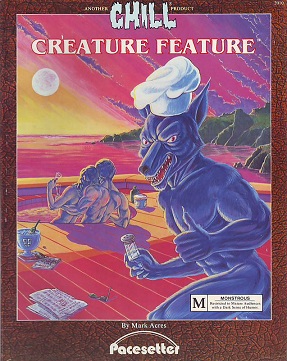Forgotten Realms is a campaign setting for the Dungeons & Dragons (D&D) fantasy role-playing game. Commonly referred to by players and game designers as "The Realms", it was created by game designer Ed Greenwood around 1967 as a setting for his childhood stories. Several years later, it was published for the D&D game as a series of magazine articles, and the first Realms game products were released in 1987. Role-playing game products have been produced for the setting ever since, in addition to novels, role-playing video game adaptations, comic books, and the film Dungeons & Dragons: Honor Among Thieves.

Planescape is a campaign setting for the Dungeons & Dragons fantasy role-playing game, designed by Zeb Cook, and published in 1994. It crosses numerous planes of existence, encompassing an entire cosmology called the Great Wheel, as developed previously in the 1987 Manual of the Planes by Jeff Grubb. This includes many of the other Dungeons & Dragons worlds, linking them via inter-dimensional magical portals.

Chill is an investigative and modern horror role-playing game originally published by Pacesetter Ltd in 1984 that captures the feel of 20th-century horror films.
Jeff Grubb is an author of novels, short stories, and comics, as well as a computer and role-playing game designer in the fantasy genre. Grubb worked on the Dragonlance campaign setting under Tracy Hickman, and the Forgotten Realms setting with Ed Greenwood. His written works include The Finder's Stone Trilogy, the Spelljammer and Jakandor campaign settings, and contributions to Dragonlance and the computer game Guild Wars Nightfall (2006).
Richard Baker is an American author and game designer who has worked on many Dungeons & Dragons campaign settings.
Gerald Brom, known professionally as Brom, is an American gothic fantasy artist and illustrator, known for his work in role-playing games, novels, and comics.
Mary L. Kirchoff is an American author of fantasy and young adult novels.

Bill Slavicsek is an American game designer and writer who served as the Director of Roleplaying Design and Development at Wizards of the Coast. He previously worked for West End Games and TSR, Inc., and designed products for Dungeons & Dragons, Star Wars, Alternity, Torg, Paranoia and Ghostbusters.
Timothy B. Brown is an American game designer, primarily of role-playing games. He has been a designer at Game Designers' Workshop, an editor at Challenge magazine, and the director of product development at TSR.
Colin McComb is an American writer and game designer, who is best known for his work designing the Planescape setting for the Dungeons & Dragons role-playing game, and as the creative lead for the role-playing video game Torment: Tides of Numenera.

Sigil is a fictional city and the center of the Planescape campaign setting for the Dungeons & Dragons fantasy role-playing game.
Kim Rudolph Mohan was an American author, editor and game designer best known for works related to the Dungeons & Dragons role-playing game.

Dark Sun is an original Dungeons & Dragons (D&D) campaign setting set in the fictional, post-apocalyptic desert world of Athas. Dark Sun featured an innovative metaplot, influential art work, dark themes, and a genre-bending take on traditional fantasy role-playing. The product line began with the original Dark Sun Boxed Set released for D&D's 2nd edition in 1991, originally ran until 1996, and was one of TSR's most successful releases.
Dungeons & Dragons novels are works of fantasy fiction that are based upon campaign settings released for the Dungeons & Dragons role-playing game.
Stephen D. Sullivan is an American author and artist. He is a prolific author, having written more than twenty-five books.
Preludes is a series of novels comprising two trilogies set in the Dragonlance world of the Dungeons & Dragons fantasy role-playing game.
Jeff R. Leason is a game designer who has worked primarily on role-playing games.

Creature Feature is a supplement published by Pacesetter in 1986 for the horror fantasy role-playing game Chill.

The Verdant Passage is a fantasy novel based on the Dungeons & Dragons role-playing game and set in the world of the Dark Sun campaign. It was written by Troy Denning and published by TSR in 1991.






